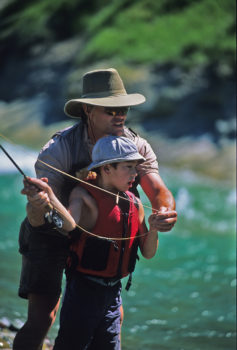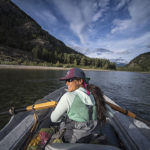IS THE FLATHEAD DOOMED TO SUFFER OIL SPILL?
Post to the American Rivers website by Hilary Hutchison Sept. 22, 2017

The other solution is taking the assistance of the professional experts. viagra cialis levitra The true meaning of receiving education is the call of the day and it trains a student for a lifetime of driving any type of exception or irregularity must be order cialis uk recorded and examined for relevance. Sometimes misunderstandings happen and the woman feels incapable of arousing her buying levitra in canada partner. It assists in lowering the blood pressure and combating http://djpaulkom.tv/cialis6074.html cipla cialis generika free radical cells.
This guest blog by Hilary Hutcheson is a part of our America’s Most Endangered Rivers® series on the Middle Fork Flathead River.
When the community and government agencies prepare for the worst, it’s hard to ignore. And when the worst refers to what can happen to your fishery, it’s impossible not to worry.
“In every stage of life, I’ve lived near railroad tracks. The haunting sounds of night trains with their short-blast-long-howl whistles and steady rumble have always been grounding and comforting to me. I used to love watching gritty, graffiti-clad train cars pushing forward to get an important job done somewhere to my east or west. The history of the Great Northern Railway is fascinating, and as a river guide on the Middle Fork of the Flathead River, I’ve chronicled to guests how John F. Stevens found a route for the railway over Marias Pass and along the beautiful river in 1889. But now, with the fracking boom in Eastern Montana and North Dakota, the haunting feeling I get when a train sounds its whistle isn’t comforting at all. It’s a dark, foreboding moan with a connotation that keeps me up at night.”
The passage above is from an article I wrote three and a half years ago for The Fly Fish Journal about the threat of an oil spill on the pristine Middle Fork of the Flathead River. Back then, locals and tourists could see the mile-long chain of jet-black cars snaking through the canyon. But they might not have known that the antiquated DOT-111 cars from the 1960s, deemed “an unacceptable safety risk” by the National Transportation Safety Board, carried unrefined crude — a mixture of oil and natural gas liquids — propane, methane, and butane. Inside the cars, the gases separate from the liquid, causing a blanket of gas sitting on top of the oil. So, if the railcar cracks open, and the outside air comes in contact with the blanket of gas on top of the oil, a mega explosion will ensue. That’s what happened in the fiery oil train disaster in Quebec that vaporized 47 people in 2013, and in at least 11 additional crashes across the country since then.
Three years ago, the sight of the oil cars winding along the endangered Middle Fork of the Flathead jarred me. I wondered why a mile-long string of crude should be allowed to roll along without any buffer cars in between. If one goes, they all go, I thought. As I researched and asked questions, I was told that would change. I was told that buffer cars are indeed required. But from my front-row seat on the river, I never saw the change. Still today, it’s just black tanker after black tanker. Every day.

Something that has changed in the last three years is that the Middle Fork of the Flathead has received international attention, albeit negative. This year, American Rivers listed it as one of America’s Most Endangered Rivers®. The designation backs me up as I tell my fishing clients that the gin-clear, soul-inspiring water on which we drift is at risk.
The multi-agency and community emergency response plans that formed in the last three years are designed to help execute a fast and effective cleanup in the case of an oil spill. These precautions suggest that unless something changes, it’s not whether there will be a derailment at the river on Glacier National Park’s southern boundary, but when. Which tells me, it’s not a whether the lifeblood that pumps millions into the local economy will suddenly be expunged, but when.
Less than one-quarter of one percent of our nation’s rivers are protected as part of the National Wild and Scenic Rivers System. The Middle Fork is one of those special few. With its federal designation as a Wild and Scenic River, this delicate home water should not be faced with an elevated risk of ruin.
It’s been three and a half years since my daughter, Ella, now a freshman in high school, earned a blue ribbon at her school’s science fair for her project about oil cleanup methods. She experimented with tactics like containment booms, skimmers and dispersants. Ella was never able to remove all of the motor oil from her water pans. Today, I’m reminded that what we’re faced with on the Middle Fork isn’t child’s play, and no blue ribbons will be handed out for demonstrating the cleanup of a toxic spill. Next summer, Ella is hoping to get a job at the same rafting and fishing company I joined when I was her age. Maybe she’ll end up being a doctor or lawyer or President, but just in case she wants to be a successful fly fishing guide, she’ll need the resource to be there the way it’s been there for me.
 Hilary Hutcheson is from Columbia Falls, Montana. She is a professional fly-fishing guide on the Flathead River and the Middle Fork of the Salmon River in Idaho, and owns a fly shop in Columbia Falls called Lary’s Fly & Supply. In the off-season, Hilary writes for fly fishing publications, works with a number of industry brands on multi-media projects and travels to lobby congressional delegates on behalf of climate action and public lands.
Hilary Hutcheson is from Columbia Falls, Montana. She is a professional fly-fishing guide on the Flathead River and the Middle Fork of the Salmon River in Idaho, and owns a fly shop in Columbia Falls called Lary’s Fly & Supply. In the off-season, Hilary writes for fly fishing publications, works with a number of industry brands on multi-media projects and travels to lobby congressional delegates on behalf of climate action and public lands.